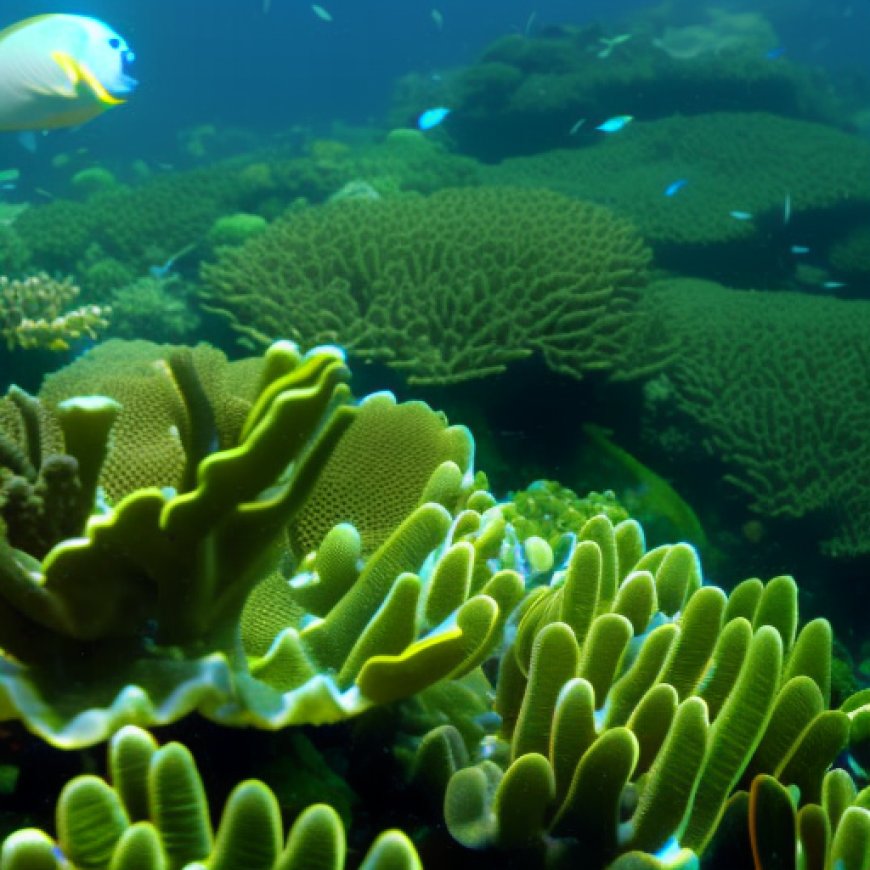Threatened Caribbean Corals Receive Critical Habitat Protections
Threatened Caribbean Corals Receive Critical Habitat Protections Center for Biological Diversity


National Marine Fisheries Service Announces Critical Habitat Designations for Caribbean Corals

WASHINGTON— The National Marine Fisheries Service announced critical habitat designations today for five species of Caribbean corals. The agency’s final rule protects 6,500 square miles of marine habitat in Florida, Puerto Rico, the U.S. Virgin Islands, Navassa Island and the Flower Gardens Banks in the Gulf of Mexico.
Protecting Corals for a Sustainable Future
“Corals need all the help they can get right now, and I’m relieved to finally see these habitat protections put into place,” said Elise Bennett, Florida and Caribbean director at the Center for Biological Diversity. “Ensuring these incredible species have a healthy habitat will help secure their future in a hotter world. We need bold action to address the many threats corals face, from water pollution to fossil fuel-driven climate change. It’s the only way to keep them from sliding into extinction.”
Lawsuit Leads to Critical Habitat Designations
The designations follow a March lawsuit filed by the Center for Biological Diversity against the Fisheries Service for failing to finalize protections for 12 threatened coral species around Florida and islands in the Pacific Ocean, including the five that received habitat designations in today’s rule. All the species were listed under the Endangered Species Act in 2014 but did not receive the critical habitat designation the law requires.
Threats to Coral Populations
Coral populations have declined dramatically because of climate change, pollution, and overfishing. An estimated 50% of coral reefs worldwide have already been lost to climate change, and about one-third of reef-building coral species are at risk of extinction. A marine heat wave off the Florida coast in July caused the most severe coral bleaching event in the state’s history.
Benefits of Critical Habitat Designation
Designating critical habitat protection for an endangered species makes it twice as likely to recover as those without safeguards. Critical habitat designation could improve water quality throughout the coastal zone, limit over-fishing and protect spawning grounds, reduce harm from development and dredging, and reduce human pressure on hundreds of thousands of species supported by reefs. The protections do not close off areas for people to swim, fish, and recreate.
Continued Efforts for Coral Conservation
The Fisheries Service listed 20 species of corals in 2014 as threatened under the Endangered Species Act, with 12 of them occurring within U.S. waters.
In 2020, prompted by a legal agreement with the Center, the federal government proposed designating critical habitat protections off the coast of Florida, in the Caribbean, and in the Pacific Ocean. Today’s rule finalizes a portion of that proposal. The Service has not yet released a rule covering Pacific Ocean critical habitat for corals.
Species Receiving Habitat Protection
The five Caribbean corals that received habitat protection today are Dendrogyra cylindrus (pillar coral), Orbicella annularis (lobed star coral), Orbicella faveolata (mountainous star coral), Orbicella franksi (boulder star coral), and Mycetophyllia ferox (rough cactus coral).
SDGs, Targets, and Indicators in the Article
1. Which SDGs are addressed or connected to the issues highlighted in the article?
- SDG 14: Life Below Water – Protect and restore marine ecosystems and sustainably use marine resources.
- SDG 15: Life on Land – Protect, restore, and promote sustainable use of terrestrial ecosystems, sustainably manage forests, combat desertification, and halt and reverse land degradation and biodiversity loss.
2. What specific targets under those SDGs can be identified based on the article’s content?
- SDG 14.2: By 2020, sustainably manage and protect marine and coastal ecosystems to avoid significant adverse impacts, including by strengthening their resilience and take action for their restoration, to achieve healthy and productive oceans.
- SDG 15.5: Take urgent and significant action to reduce the degradation of natural habitats, halt the loss of biodiversity, and protect and prevent the extinction of threatened species.
3. Are there any indicators mentioned or implied in the article that can be used to measure progress towards the identified targets?
- Indicator for SDG 14.2: Percentage of marine areas protected to promote conservation and sustainable use of marine resources.
- Indicator for SDG 15.5: Number of species protected under the Endangered Species Act and designated critical habitat areas.
Table: SDGs, Targets, and Indicators
| SDGs | Targets | Indicators |
|---|---|---|
| SDG 14: Life Below Water | Target 14.2: By 2020, sustainably manage and protect marine and coastal ecosystems to avoid significant adverse impacts, including by strengthening their resilience and take action for their restoration, to achieve healthy and productive oceans. | Indicator: Percentage of marine areas protected to promote conservation and sustainable use of marine resources. |
| SDG 15: Life on Land | Target 15.5: Take urgent and significant action to reduce the degradation of natural habitats, halt the loss of biodiversity, and protect and prevent the extinction of threatened species. | Indicator: Number of species protected under the Endangered Species Act and designated critical habitat areas. |
Behold! This splendid article springs forth from the wellspring of knowledge, shaped by a wondrous proprietary AI technology that delved into a vast ocean of data, illuminating the path towards the Sustainable Development Goals. Remember that all rights are reserved by SDG Investors LLC, empowering us to champion progress together.
Source: biologicaldiversity.org

Join us, as fellow seekers of change, on a transformative journey at https://sdgtalks.ai/welcome, where you can become a member and actively contribute to shaping a brighter future.







